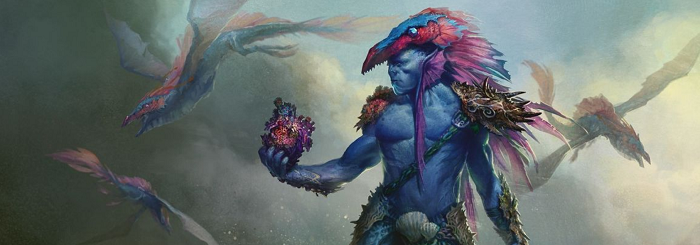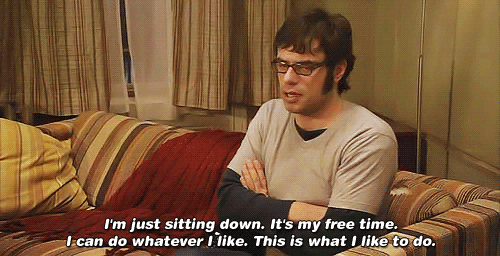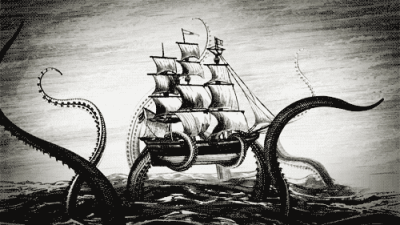(Talrand, Sky SummonerTalrand, Sky Summoner | Art by Svetlin Velinov)
Time Stretch
Hello, and welcome back to a special edition of Ultra Budget Brews, the article series that builds entire EDH decks containing no card that costs more than $1 (commander excluded). Normally, these articles are monthly due to the fact that real life is a busy, controlling mistress, but as I work in education, for the moment I have found myself with an excess of free time.
One thing I've noticed on social media is that I am not the only person who has found themselves with some extra free time. Being stuck at home for long periods of time can definitely lead to bouts of boredom and one way to battle this is to teach the people you are stuck with Magic. Between running an after school club for the last three years and teaching a bunch of my family and random friends, I have taught dozens of people to play Magic and I have almost exclusively used EDH to do so.
If you are reading this, you are either very experienced with EDH or very excited to learn; people don't often read articles about EDH if they aren't one of the two. If you are the person that is very experienced, it can be difficult to realize how much you know and take for granted. Magic is a huge game with a lot to keep track of and EDH only amplifies this by giving you twice as much to keep track of. In short, it can be difficult to teach.
My goal is to build a few decks that would be useful to those who might be interested in getting someone into EDH or in having a deck that is at an appropriate level of power and complexity to play against someone who is just getting into the format and is new-ish to Magic. The goal of these will be to have something that is fairly intuitive for someone to pick up and play or, if playing against it, to be able to look across the table and understand what is happening. EDH actually goes a long way to help us with this by providing a commander which often serves as a great signpost, giving a lot of information about the goal of the deck.
We want our deck to be doing something that is easy to explain and understand. If you can't explain the goal of the deck in a sentence or two, it's likely a bit too complex. I don't mean "The deck's goal is to win the game hue hue hue." Obviously we're trying to do that. One of my go-to decks to teach people to play is a Gisa and GeralfGisa and Geralf Zombie tribal deck. When I tell people what the deck is trying to do, I tell them they are filling up the graveyard, eventually attempting to overwhelm their opponents with a horde of Zombies. This gives them a goal. If they are able to accomplish this, they will likely feel that they have been successful, even if they lose.
With all of this being said, we still want the deck to be able to compete. Just because we are building a cheap, simple deck doesn't mean we don't want it to be able to win. Giving someone a deck that is so underpowered that is doesn't stand a chance will not encourage someone to want to play again.
So in conclusion we want our deck to be:
- Intuitive
- Led by a commander with a clear game plan
- Able to compete
Our Commander
We are starting off with mono-blue. I find mono-colored decks to be easier to explain to someone who is new to Magic, and players don't have to be as concerned with tapping the correct land as basically any land will do the trick. Talrand also checks all three boxes that we lined out above. Talrand gives us a very clear game plan, which is to cast a bunch of instants and sorceries to create a flying army. Thankfully, since this is all basically spelled out in Talrand's text box, it's pretty intuitive. Lastly, if you've ever played against a Talrand deck, you'll know exactly how competitive it can be. So what does our deck look like?
Nickelodeons Josh and Talrand
View on ArchidektCommander (1)
- 1 Talrand, Sky SummonerTalrand, Sky Summoner
Instants (30)
- 1 AetherizeAetherize
- 1 AethersnatchAethersnatch
- 1 AetherspoutsAetherspouts
- 1 AnticipateAnticipate
- 1 BrainstormBrainstorm
- 1 Chemister's InsightChemister's Insight
- 1 Commence the EndgameCommence the Endgame
- 1 CounterspellCounterspell
- 1 Disdainful StrokeDisdainful Stroke
- 1 DissolveDissolve
- 1 Epiphany at the DrownyardEpiphany at the Drownyard
- 1 Fact or FictionFact or Fiction
- 1 FoilFoil
- 1 Frantic SearchFrantic Search
- 1 Gather SpecimensGather Specimens
- 1 ImpulseImpulse
- 1 Insidious WillInsidious Will
- 1 Lat-Nam's LegacyLat-Nam's Legacy
- 1 NegateNegate
- 1 OptOpt
- 1 Overwhelming IntellectOverwhelming Intellect
- 1 Polymorphist's JestPolymorphist's Jest
- 1 Precognitive PerceptionPrecognitive Perception
- 1 Pull from TomorrowPull from Tomorrow
- 1 Radical IdeaRadical Idea
- 1 Reality ShiftReality Shift
- 1 Synthetic DestinySynthetic Destiny
- 1 Telling TimeTelling Time
- 1 Think TwiceThink Twice
- 1 Thirst for KnowledgeThirst for Knowledge
Enchantments (7)
- 1 Archetype of ImaginationArchetype of Imagination
- 1 Favorable WindsFavorable Winds
- 1 Jace's SanctumJace's Sanctum
- 1 Kumena's AwakeningKumena's Awakening
- 1 Military IntelligenceMilitary Intelligence
- 1 Naiad of Hidden CovesNaiad of Hidden Coves
- 1 Wavebreak HippocampWavebreak Hippocamp
Artifacts (6)
- 1 Elixir of ImmortalityElixir of Immortality
- 1 Guardian IdolGuardian Idol
- 1 Hall of TriumphHall of Triumph
- 1 Heraldic BannerHeraldic Banner
- 1 Mind StoneMind Stone
- 1 Prismatic LensPrismatic Lens
Sorceries (13)
- 1 Aminatou's AuguryAminatou's Augury
- 1 Chart a CourseChart a Course
- 1 Commit // MemoryCommit // Memory
- 1 Curse of the SwineCurse of the Swine
- 1 Deep AnalysisDeep Analysis
- 1 Flood of TearsFlood of Tears
- 1 Mass PolymorphMass Polymorph
- 1 Rise from the TidesRise from the Tides
- 1 Scour All PossibilitiesScour All Possibilities
- 1 See BeyondSee Beyond
- 1 SleepSleep
- 1 Treasure CruiseTreasure Cruise
- 1 Winged WordsWinged Words
Creatures (7)
- 1 GuileGuile
- 1 Murmuring MysticMurmuring Mystic
- 1 Psychosis CrawlerPsychosis Crawler
- 1 Sprite NobleSprite Noble
- 1 Stormtide LeviathanStormtide Leviathan
- 1 Windreader SphinxWindreader Sphinx
- 1 Windstorm DrakeWindstorm Drake
Lands (36)
- 1 Desert of the MindfulDesert of the Mindful
- 31 IslandIsland
- 1 Lonely SandbarLonely Sandbar
- 1 Myriad LandscapeMyriad Landscape
- 1 Mystic SanctuaryMystic Sanctuary
- 1 Remote IsleRemote Isle
Total cost: $25.98
Unsurprisingly, we are leaning heavily into instants and sorceries. All told, we're running 43 of them. We can split them into roughly two camps: draw spells and counters. We are not your average Talrand deck that does nothing but counter every meaningful spell your opponent tries to cast. If you've ever been on the receiving end of one of these decks, you likely remember exactly how miserable it was to play against. It certainly would be competitive, but we aren't interested in the games that sort of deck would encourage. This is not to say that we should run no counterspells. It's one of the strengths of the color, so we should definitely lean into it a bit. We're playing eight of them.
The other camp is draw spells. 24 of our 43 instants and sorceries at least replace themselves, and many of them do much more than that. The aforementioned typical Talrand deck can run into the issues of running out of cards. This should not be a problem for our deck. While we do miss out on the most efficient one-mana cantrips (PonderPonder, PreordainPreordain, and Serum VisionsSerum Visions), we still have plenty of low-cost options to help us refill our hand and create Drakes, most notable among these being BrainstormBrainstorm, Scour All PossibilitiesScour All Possibilities, ImpulseImpulse, and Telling TimeTelling Time.
We also are running a few underplayed gems like Lat-Nam's LegacyLat-Nam's Legacy, Chart a CourseChart a Course and See BeyondSee Beyond. Winged WordsWinged Words is a fantastic draw spell in this deck as well. It will almost always be a two-mana draw two, and it has a fail case of being a DivinationDivination, which is perfectly acceptable.
We only run a few creatures in the deck, all of them pretty impactful. Murmuring MysticMurmuring Mystic serves as a backup Talrand in case things go sideways. GuileGuile is a hilarious card that should see more play than it does, making your counterspells truly deadly. Psychosis CrawlerPsychosis Crawler turns all of that card draw into damage and Stormtide LeviathanStormtide Leviathan simply ends games.
Blue has shockingly good creature removal for EDH, containing my three favorite non-white target removal spells: PongifyPongify, Rapid HybridizationRapid Hybridization, and Reality ShiftReality Shift. Sadly, we only get to run Reality shiftReality shift, but we do get to run Curse of the SwineCurse of the Swine and Polymorphist's JestPolymorphist's Jest, both of which can do the trick in a pinch.
We have three additional ways of winning the game. The most straightforward of these is Rise from the TidesRise from the Tides. We are liable to have a graveyard full to the brim with instants and sorceries, allowing us to fill the battlefield to the brim with Zombies. The other two are Mass PolymorphMass Polymorph and Synthetic DestinySynthetic Destiny. Sometimes, when our opponents fill the skies with Dragons, Angels, and Demons, our valiant Drakes simply won't be enough. When that's the case, trade them out for some bigger creatures from your deck.
We also have a few artifacts to help us ramp. We don't need color fixing, so we are free to play rocks like Prismatic LensPrismatic Lens, Mind StoneMind Stone and Guardian IdolGuardian Idol without worrying we will miss the colored mana provided by more expensive cards like Arcane SignetArcane Signet and Sky DiamondSky Diamond. The best mana rock in our deck is almost certainly Heraldic BannerHeraldic Banner. It should see play in basically any token deck. It's powerful and shouldn't be slept on.
Playing the Deck
The most difficult part about playing the deck will be when to play Talrand, Sky SummonerTalrand, Sky Summoner. Our deck works incredibly well with him in play, and doesn't do much without him. Plus, our opponents aren't likely to allow him to stick around. If you can untap with him in play, you are in a great position to start taking over the game.
Knowing these things, we have a few options. The first option is to wait until you have some sort of instant in hand and enough mana to cast both it and Talrand in the same turn, allowing you to get at least some value out of him. If that instant is a CounterspellCounterspell, so much the better. The other option is to wait for your opponents to have used a few board wipes and removal spells before playing him. The last option is to YOLO him on to the battlefield with zero backup. I prefer the first two options, but every once in awhile, the third option will absolutely get you there. Your mileage my vary.
Other than that, the deck is pretty simple. Play Talrand, make a bunch of Drakes, attack your opponents with those Drakes. Rinse and repeat. Sometimes simple can be a lot of fun, and this deck definitely qualifies as that.
Notable Inclusions
AethersnatchAethersnatch
Aethersnatch
Another of blue's strengths is theft. Often, that theft happens once the spell is already on the board, with Control MagicControl Magic being the archetypal example. AethersnatchAethersnatch allows you to either take control of anything your opponent might be trying to do, no matter what kind of spell it may be. True, leaving six mana up is a big ask, but this will win games for you.
Aminatou's AuguryAminatou's Augury
Aminatou's Augury
This is admittedly a bit of a pet card of mine. Eight mana is a lot, but getting to cast a number of spells for free (along with getting a land) is exactly the kind of big, splashy play that EDH is all about.
Sprite NobleSprite Noble
Sprite Noble
Changing your Drakes from 2/2's in to 2/3's isn't the most impactful of abilities, but the ability to tap this to make them into 3/3's is a much, much bigger deal. Blue doesn't have a ton of anthems, and the ones that it does have access to are typically a bit pricier. This will do the trick.
Flood of TearsFlood of Tears
Flood of Tears
Blue's weakness is typically dealing with permanents, especially noncreature permanents, once they've resolved. The multiplayer nature of EDH helps shore up this weakness a bit, but we can't rely on our opponents to do our jobs for us. Flood of TearsFlood of Tears looks symmetrical, but you almost always are going to be able to play something for free with it. Cards like Stormtide LeviathanStormtide Leviathan, GuileGuile, and Windreader SphinxWindreader Sphinx all feel a lot better when they are cast for free. Who knew?
SleepSleep
Sleep
This card is a workhorse. It can be used defensively to save you from someone's giant board of critters, but will more often be used to tap a bunch of blockers down, allowing you to freely bite. Or... peck? Strike? Not sure exactly what Drakes do, but whatever it is, SleepSleep allows you to do a lot of it.
Notable Exclusions
These are cards I'd add to the deck if you want to up the power level of the deck, are unconcerned with maintaining a strict budget, or just have a copy laying around.
Gravitational ShiftGravitational Shift
Gravitational Shift
If it were up to me, this would be the first addition to the deck. Turning your army of Drakes in to 4/2's will allow you to end the game twice as fast as you would be able to otherwise. Also, making your opponent's ground forces significantly smaller will help you survive for longer once you do end up getting targeted. The downside of pumping your opponent's flying creatures will certainly matter some amount of the time, but you will have more fliers than your opponents and only 12 of the top 100 creatures even have flying. I'm not saying you will never see flyers, just that the most popular creatures don't seem to have it.
Bident of ThassaBident of Thassa
Bident of Thassa
Military IntelligenceMilitary Intelligence is our budget replacement for this, but we would really prefer this (or Coastal PiracyCoastal Piracy). Since we are going wide with evasive tokens, our opponents aren't often going to be able to block everything, allowing us to draw quite a few cards. It's a bit like Edric, Spymaster of TrestEdric, Spymaster of Trest, but with fewer Elf ears.
Caged SunCaged Sun
Caged Sun
This is one of the aforementioned expensive anthems, but referring to this as an anthem doesn't give the full story. Doubling your mana production is a potent effect, but without a bevy of X spells or mana sinks, many decks will run out of things to do with all of the mana you are producing. With as many cards as you are likely to draw with this deck, you are much less likely to do that. The hits (and the Drakes) just keep coming.
Illusionist's GambitIllusionist's Gambit
Illusionist's Gambit
Do you enjoy Disrupt DecorumDisrupt Decorum? You should. This is sort of a blue version of that. Disrupt DecorumDisrupt Decorum gives everyone at the table a horrible, sinking feeling knowing they have to make an unprofitable attack, or that they will be the target of an opponent's unmitigated aggression. Illusionist's GambitIllusionist's Gambit instead gives your opponent the illusion of control, gives them hope, and then rips it away from them, sending them careening into another unsuspecting, undeserving player. Play more Illusionist's GambitIllusionist's Gambit.
Archmage's CharmArchmage's Charm
Archmage's Charm
The typical downside of this card is its horrendous triple-colored mana requirement. This can be a tough ask for decks with three or more colors, and everyone can remember a game with two color decks where they simply couldn't find their second color. It happens, but it won't happen in this deck. If you are a longtime reader, you'll know exactly how much I love modality (hint: I love it a lot), and this card is no different. You'll typically use the top two modes, but when you get to use the third mode to steal someone's Sol RingSol Ring....
End Step
What would you add to a deck like this? Do you keep decks on you that you can use to teach players or give to beginners? Have you been victimized by a Talrand deck recently? Let me know below! Until next time!
Andrew Cummings
Andrew is a life-long gamer and has been playing Magic since 2013. He works as an ASL interpreter, enjoys running, and sitting on his porch reading, while simultaneously silently judging his neighbors. He lives in Joplin, MO with his wife.
Your opinions are welcome. We love hearing what you think about Magic! We ask that you are always respectful when commenting. Please keep in mind how your comments could be interpreted by others. Personal attacks on our writers or other commenters will not be tolerated. Your comments may be removed if your language could be interpreted as aggressive or disrespectful. You may also be banned from writing further comments.





